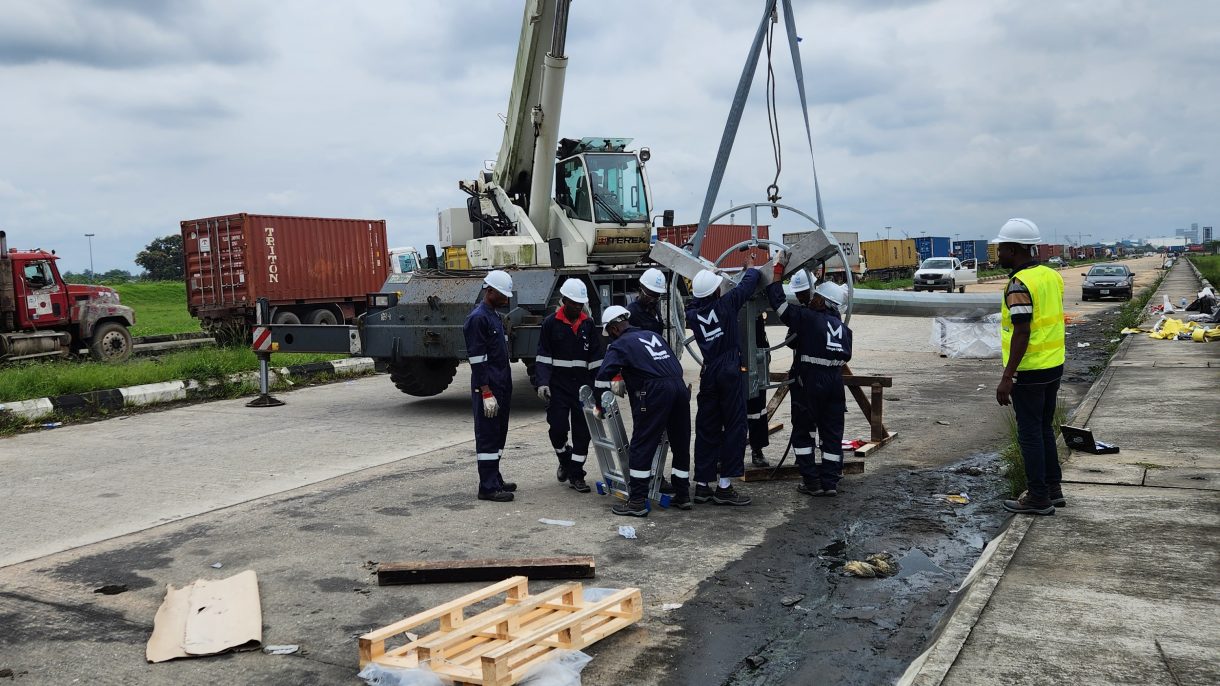
High mast lighting installation involves the setup and arrangement of tall poles equipped with powerful lighting fixtures, typically used to illuminate large areas such as highways, airports, stadiums, and industrial facilities. Here’s a brief overview of the key aspects of high mast lighting installation:
Design and Planning:
- Before installation begins, a thorough design and planning phase is crucial. Factors such as the area to be illuminated, the required illumination levels, and the specific needs of the location are considered.
- Engineers design the layout, determining the number and placement of high mast poles, the height of the masts, and the type of lighting fixtures to be used.
Foundation Construction:
- High mast lighting structures are tall and heavy, requiring a solid foundation to support them. The installation process starts with digging foundation pits and pouring concrete to anchor the mast securely.
- The foundation design considers the soil conditions, wind loads, and the weight of the high mast structure.
Mast Erection:
- Once the foundations are set, the high mast poles are erected using cranes or other specialized equipment. The installation team ensures that the poles are perfectly vertical and aligned according to the design specifications.
- Mast sections are typically assembled on-site, and the mast is raised in stages.
Electrical Wiring:
- After the mast is in place, electrical wiring is installed to connect the lighting fixtures to the power source. This involves running cables down the mast and connecting them to a control box at the base.
Lighting Fixture Installation:
- High mast lighting fixtures are then mounted on the mast at predetermined positions. These fixtures are designed to provide powerful and even illumination over a wide area.
- The type of lighting fixtures depends on the specific requirements of the location, such as the desired light intensity, color temperature, and beam angle.
Testing and Commissioning:
- Once the installation is complete, thorough testing is conducted to ensure that all electrical connections are secure, and the lighting system functions as intended.
- This phase also includes the alignment and adjustment of the lighting fixtures to achieve the desired illumination pattern.
Maintenance and Monitoring:
- High mast lighting installations require regular maintenance to ensure continued functionality. This includes checking for any damaged components, cleaning fixtures, and inspecting electrical connections.
- Some high mast lighting systems may also incorporate monitoring and control systems for remote operation and maintenance.
High mast lighting installations are critical for providing effective illumination in large outdoor areas, contributing to improved safety, security, and visibility during nighttime hours. Proper installation and maintenance are essential to ensuring the longevity and reliability of these lighting systems.

